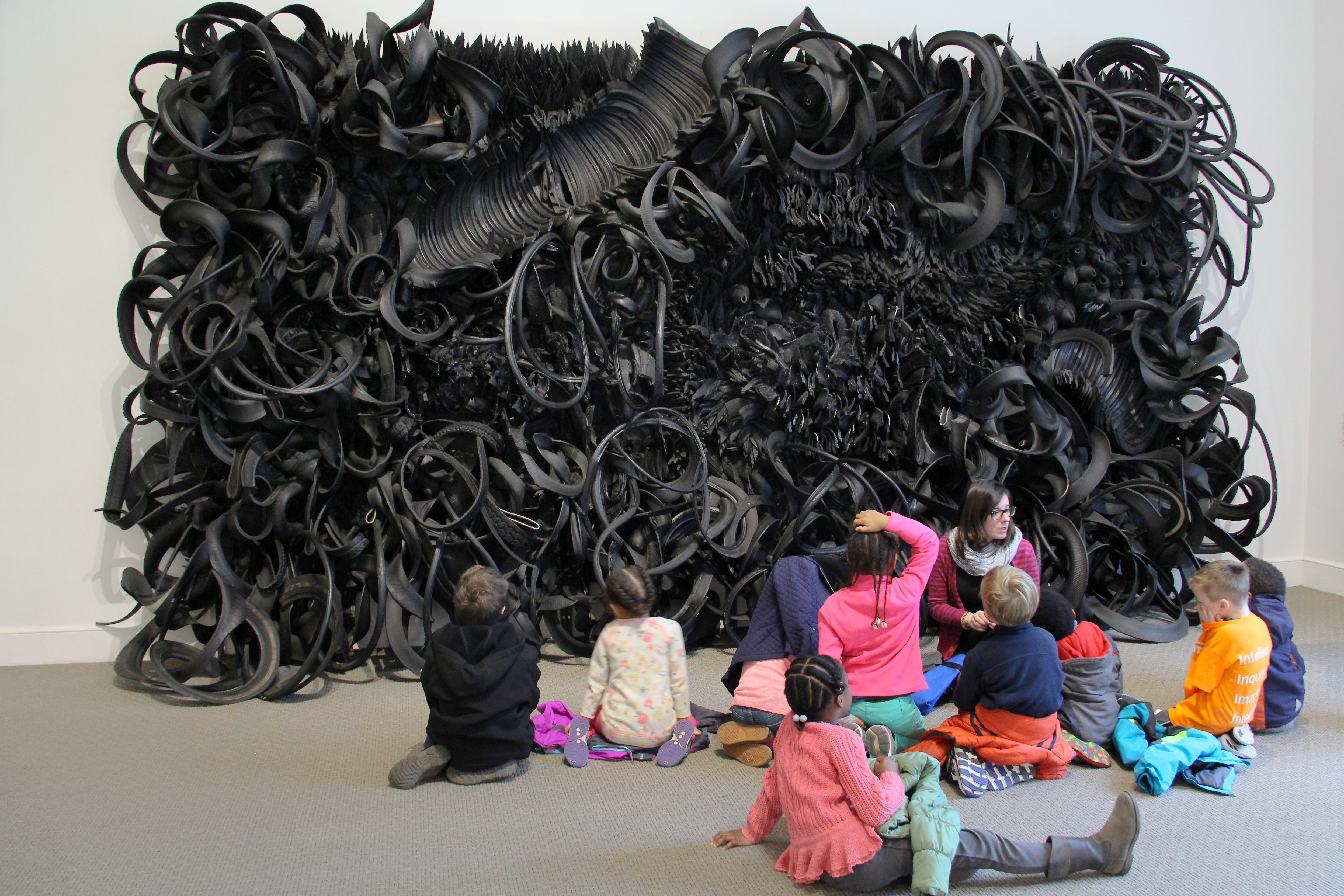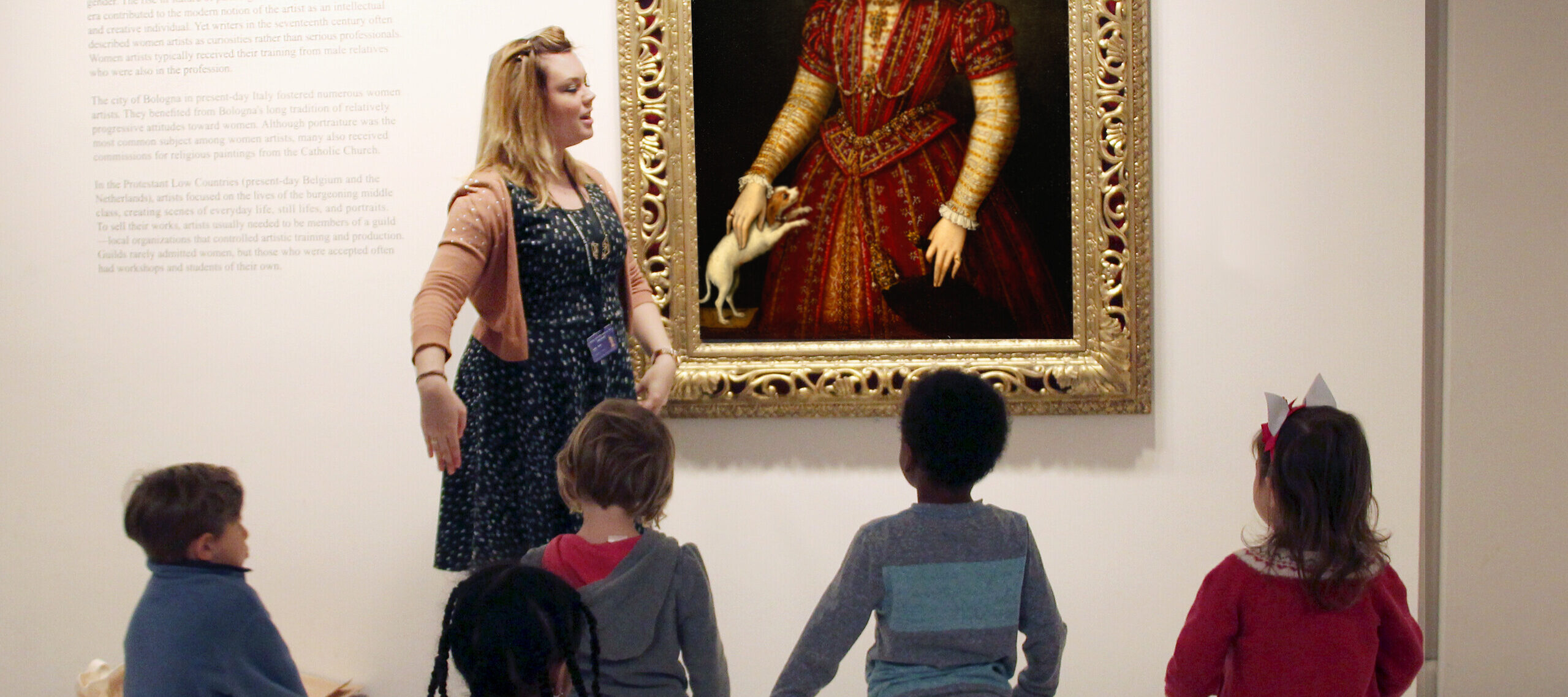NMWA hosts free and hands-on thematic tours for students in kindergarten through high school. This April, the museum launches a pilot series of tours created specifically for early learners, children ages 3, 6. As the Education Department’s intern, I collaborated with the museum’s summer Teacher Institute alumni to create a Pre-K tour for NMWA. Teachers answered surveys, provided feedback on lesson plans, and signed up to bring more than 140 Pre-K students test the museum’s pilot tour.

I wanted to create an art-filled tour that would hold the interest of young minds. I considered which museum spaces were best for a young, energetic audience. Are objects positioned low enough for young children to see? Is there space for ten kids to sit comfortably without obstructing other visitors’ paths? Which art materials are allowed in the galleries? How do kids with little legs maneuver quickly through the museum? Feedback from teachers, personal experience, and collaboration with staff helped answer these questions.
We decided to offer tours that are shorter than 60 minutes, focus on two artworks, and begin before public hours. This project will introduce early learners to art concepts in three categories: colors, shapes, and portraits. Before exploring the collection, students will listen to a story related to the theme of the tour: My Many Colored Days by Dr. Seuss, Perfect Square by Michael Hall, or My Best Friend is as Sharp as a Pencil by Hanoch Piven.
On the tours, we will visit large artworks with a lot of visual interest—like Antoine Cécile Hortense Haudebourt-Lescot’s Young Woman Seated in the Shade of a Tree. Chakaia Booker’s attention-grabbing Acid Rain might be too accessible for little hands, so we wukk explain “museum manners.” They might be asked to look at Lynda Benglis’s Eridanus and re-create its shape and lines with their bodies, identify the colors in Elaine de Kooning’s Bacchus #3 using color-detective spyglasses, or pose like Lavinia Fontana’s Portrait of a Noblewoman before creating their own self-portraits.

In the museum’s Great Hall, our tiny visitors will have the opportunity for hands-on material exploration. We will encourage them to experiment with the process of creating by using materials like oil pastels, colored pencils, glue, fabric, and paper scraps. Because the Great Hall’s marble floor would be uncomfortable to sit on, we ordered carpet squares for the kids.
Prioritizing the process of making over the final product, we hope to expose Pre-K audiences to authentic materials and get them inspired by NMWA’s collection. The museum’s Great Hall often provides a stunning backdrop for various elegant events, but it’s exciting to think of the space filled with rainbow-colored carpet squares, art supplies, and preschoolers with big imaginations.
